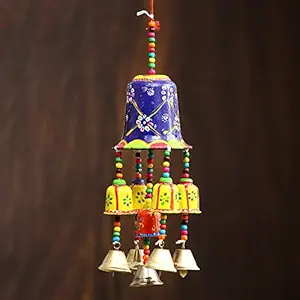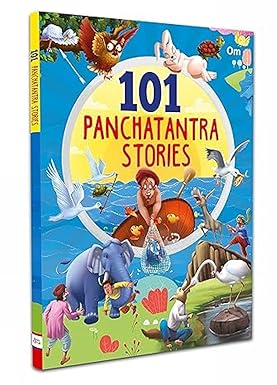आरती कुंजबिहारी की,
श्री गिरिधर कृष्ण मुरारी की ॥
आरती कुंजबिहारी की,
श्री गिरिधर कृष्ण मुरारी की ॥
गले में बैजंती माला,
बजावै मुरली मधुर बाला ।
श्रवण में कुण्डल झलकाला,
नंद के आनंद नंदलाला ।
गगन सम अंग कांति काली,
राधिका चमक रही आली ।
लतन में ठाढ़े बनमाली
भ्रमर सी अलक,
कस्तूरी तिलक,
चंद्र सी झलक,
ललित छवि श्यामा प्यारी की,
श्री गिरिधर कृष्ण मुरारी की ॥
॥ आरती कुंजबिहारी की...॥
कनकमय मोर मुकुट बिलसै,
देवता दरसन को तरसैं ।
गगन सों सुमन रासि बरसै ।
बजे मुरचंग,
मधुर मिरदंग,
ग्वालिन संग,
अतुल रति गोप कुमारी की,
श्री गिरिधर कृष्णमुरारी की ॥
॥ आरती कुंजबिहारी की...॥
जहां ते प्रकट भई गंगा,
सकल मन हारिणि श्री गंगा ।
स्मरन ते होत मोह भंगा
बसी शिव सीस,
जटा के बीच,
हरै अघ कीच,
चरन छवि श्रीबनवारी की,
श्री गिरिधर कृष्णमुरारी की ॥
॥ आरती कुंजबिहारी की...॥
चमकती उज्ज्वल तट रेनू,
बज रही वृंदावन बेनू ।
चहुं दिसि गोपि ग्वाल धेनू
हंसत मृदु मंद,
चांदनी चंद,
कटत भव फंद,
टेर सुन दीन दुखारी की,
श्री गिरिधर कृष्णमुरारी की ॥
॥ आरती कुंजबिहारी की...॥
आरती कुंजबिहारी की,
श्री गिरिधर कृष्ण मुरारी की ॥
आरती कुंजबिहारी की,
श्री गिरिधर कृष्ण मुरारी की ॥
Introduction to Krishna Aarti
Who is Lord Krishna
Lord Krishna is the eighth avatar of Lord Vishnu, revered for his divine love, compassion, wisdom, and plays central roles in the Bhagavad Gita, Krishna leelas, his guidance as divine friend and teacher.
Legends & Leelas of Krishna
From his childhood in Vrindavan, playful butter-stealing, Govardhan lifting, to Bhagavad Gita — each leela (divine play) provides moral and spiritual lessons devotees recall in the Aarti.
Role in Bhakti Tradition
Krishna Aarti has been central to Bhakti movement, sung by saints & poets (Surdas, Mirabai etc.), embedded in devotional culture to cultivate love and surrender rather than doctrinal ritualism.
Symbolism & Iconography
Symbols like the flute, peacock feather, cow-herd imagery, lotus, Radha-Krishna love, convey beauty, innocence, divine play and guide devotees to love, purity, devotion.
Why People Recite Krishna Aarti
To invoke blessings of peace, remove obstacles, feel divine presence, strengthen faith, gain joy and spiritual upliftment in daily life. :contentReference[oaicite:8]{index=8}
Lyrics & Meaning of Krishna Aarti
Original Lyrics + Transliteration
Provide the original text of Krishna Aarti in Hindi/Sanskrit (or regional version) along with transliteration to help all devotees recite properly and with devotion.
Translation & Interpretation
Translate key verses into English or local languages to explain metaphors, moral teachings, nature imagery, and what devotees are asking in the Aarti. :contentReference[oaicite:9]{index=9}
Verse-wise Significance
Each verse may request protection, wisdom, love, blessing; breaking down verses helps devotees understand the devotion and moral content.
Key Names & Epithets Explained
Names like ‘Govinda’, ‘Gopala’, ‘Madhava’, ‘Keshava’ etc. are loaded with devotion and symbolism; clarifying their meaning connects devotees more deeply.
Memorization & Recitation Tips
Suggest listening to renditions, repeating daily, group singing, using transliteration; emphasizing correct pronunciation and internalizing meaning makes recitation more powerful.
Rituals & Procedure for Krishna Aarti
Items Required & Preparations
Prepare a clean altar, lamp or diya, incense, flowers, bell, water, prasad or sweets — devotion and cleanliness enhance the ritual.
Best Time & Auspicious Occasions
Morning (Brahma muhurta), evening, festivals like Janmashtami, Gopashtami are especially auspicious times to perform Krishna Aarti. :contentReference[oaicite:10]{index=10}
Step-by-Step Ritual Process
Clean the worship space, invoke Lord Krishna, light lamp and incense, recite Aarti with devotion, offer flowers/prasad, ring bell, conclude with dhyana or silent prayer.
Do’s & Don’ts to Observe
Avoid impure offerings, reciting mechanically, distractions, ignoring pronunciation; ensure respect, purity of items, purity of mind and sincerity.
Enhancing Atmosphere & Devotional Mood
Use devotional music, melodious instrumental accompaniment (flute, harmonium), fragrance, soft lighting, and group or family participation to uplift the spiritual experience.
Benefits & Significance of Krishna Aarti
Inner Peace & Emotional Balance
Reciting or listening to Krishna Aarti fosters emotional calm, reduces stress, fills the heart with love and joy; hearing Krishna’s divine attributes elevates mood. :contentReference[oaicite:11]{index=11}
Removal of Obstacles & Fear
Lord Krishna is worshipped as Vighnaharta — reciting his Aarti is believed to remove obstacles, dispel fear and bring ease to devotees. :contentReference[oaicite:12]{index=12}
Spiritual Growth & Devotion Enhancement
Through the practice of Aarti, devotees deepen their devotion, grow spiritually, feel closeness to the divine, learn virtues like humility and compassion.
Community & Cultural Unity
Krishna Aarti on festival days, in temples, in groups helps reinforce communal bonds, shared tradition, passing devotional heritage to younger generations.
Answered Prayers & Personal Testimonials
Devotees often relate stories of how their prayers were answered, inner peace achieved, or hardships eased after faithfully reciting Krishna Aarti. :contentReference[oaicite:13]{index=13}
Lord Krishna is the eighth avatar of Lord Vishnu, revered for his divine love, compassion, wisdom, and plays central roles in the Bhagavad Gita, Krishna leelas, his guidance as divine friend and teacher.
From his childhood in Vrindavan, playful butter-stealing, Govardhan lifting, to Bhagavad Gita — each leela (divine play) provides moral and spiritual lessons devotees recall in the Aarti.
Krishna Aarti has been central to Bhakti movement, sung by saints & poets (Surdas, Mirabai etc.), embedded in devotional culture to cultivate love and surrender rather than doctrinal ritualism.
Symbols like the flute, peacock feather, cow-herd imagery, lotus, Radha-Krishna love, convey beauty, innocence, divine play and guide devotees to love, purity, devotion.
To invoke blessings of peace, remove obstacles, feel divine presence, strengthen faith, gain joy and spiritual upliftment in daily life. :contentReference[oaicite:8]{index=8}
Provide the original text of Krishna Aarti in Hindi/Sanskrit (or regional version) along with transliteration to help all devotees recite properly and with devotion.
Translate key verses into English or local languages to explain metaphors, moral teachings, nature imagery, and what devotees are asking in the Aarti. :contentReference[oaicite:9]{index=9}
Each verse may request protection, wisdom, love, blessing; breaking down verses helps devotees understand the devotion and moral content.
Names like ‘Govinda’, ‘Gopala’, ‘Madhava’, ‘Keshava’ etc. are loaded with devotion and symbolism; clarifying their meaning connects devotees more deeply.
Suggest listening to renditions, repeating daily, group singing, using transliteration; emphasizing correct pronunciation and internalizing meaning makes recitation more powerful.
Prepare a clean altar, lamp or diya, incense, flowers, bell, water, prasad or sweets — devotion and cleanliness enhance the ritual.
Morning (Brahma muhurta), evening, festivals like Janmashtami, Gopashtami are especially auspicious times to perform Krishna Aarti. :contentReference[oaicite:10]{index=10}
Clean the worship space, invoke Lord Krishna, light lamp and incense, recite Aarti with devotion, offer flowers/prasad, ring bell, conclude with dhyana or silent prayer.
Avoid impure offerings, reciting mechanically, distractions, ignoring pronunciation; ensure respect, purity of items, purity of mind and sincerity.
Use devotional music, melodious instrumental accompaniment (flute, harmonium), fragrance, soft lighting, and group or family participation to uplift the spiritual experience.
Reciting or listening to Krishna Aarti fosters emotional calm, reduces stress, fills the heart with love and joy; hearing Krishna’s divine attributes elevates mood. :contentReference[oaicite:11]{index=11}
Lord Krishna is worshipped as Vighnaharta — reciting his Aarti is believed to remove obstacles, dispel fear and bring ease to devotees. :contentReference[oaicite:12]{index=12}
Through the practice of Aarti, devotees deepen their devotion, grow spiritually, feel closeness to the divine, learn virtues like humility and compassion.
Krishna Aarti on festival days, in temples, in groups helps reinforce communal bonds, shared tradition, passing devotional heritage to younger generations.
Devotees often relate stories of how their prayers were answered, inner peace achieved, or hardships eased after faithfully reciting Krishna Aarti. :contentReference[oaicite:13]{index=13}

दो मूंछों वाला पीतल का गणेश दीवार पर लटकाने वाला दीया
Buy Now
मल्टीकलर हैंडक्राफ्टेड सुंदर घंटी आकार दरवाज़ा-खिड़की वॉल हैंगिंग
Buy Now